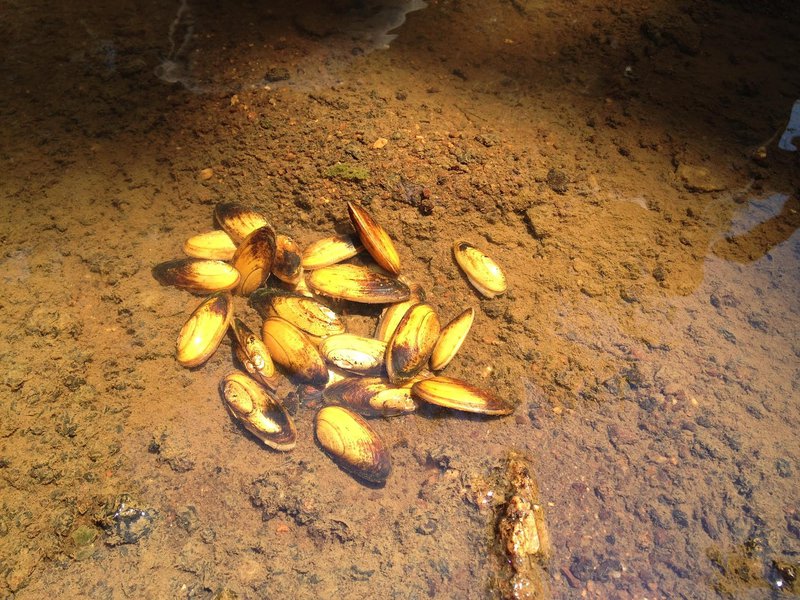For Immediate Release, April 7, 2021
|
Contact: |
Tierra Curry, (928) 522-3681, tcurry@biologicaldiversity.org |
Yellow Lance Mussel Gains 319 River Miles of Lifesaving Habitat in North Carolina, Virginia, Maryland
RALEIGH, N.C.— Following 10 years of advocacy and litigation by the Center for Biological Diversity, the U.S. Fish and Wildlife Service finalized protection today for 319 river miles of critical habitat for the threatened yellow lance freshwater mussel in North Carolina, Virginia and Maryland.
“Freshwater mussels are the most important animals most people have never heard of, so it’s terrific news that the yellow lance now has more than 300 miles of protected habitat to save it from extinction,” said Tierra Curry, a senior scientist at the Center.
The yellow lance is threatened by pollution from agriculture, logging and urban development, as well as by climate change. The species has declined by 70% in the Coastal Plain region and by approximately 50% in both the Piedmont and the Mountain regions.
There are only seven remaining populations, none of which are considered highly resilient as 86% of the streams in the mussel’s current range have poor or very poor water quality.
The yellow lance was first identified as needing federal protection in 1991. The Center petitioned for its protection under the Endangered Species Act in 2010 and won protection for the species as “threatened” in 2018.
While it’s already illegal to harm these protected mussels, critical habitat designation adds an additional layer of protection, requiring any federally funded or permitted project to consult with the Service to make sure mussel habitat is not harmed.
Mussels improve water quality by filtering small particles from the water as they eat and breathe. Healthy mussel populations reduce the cost of treating water for human consumption.
“We’ve taken such poor care of our rivers and wetlands for so long that freshwater animals are now at the leading edge of the extinction crisis in the United States,” said Curry. “Protecting little-known wildlife like mussels and crayfish will not only help end extinction but will help keep rivers safe for drinking, fishing and recreation.”
In North Carolina the yellow lance is found in the Chowan, Neuse and Tar River watersheds. The Tar River population is the healthiest and is estimated to have moderate resiliency. In Virginia the yellow lance is found in the James and Rappahannock River basins, and in Maryland it’s found in the Chesapeake River Basin.
The protected habitat is found in Franklin, Granville, Halifax, Johnston, Nash, Vance, Wake and Warren counties, North Carolina; Brunswick, Craig, Culpeper, Dinwiddie, Fauquier, Louisa, Lunenburg, Madison, Nottoway, Orange and Rappahannock counties, Virginia; and Howard and Montgomery counties, Maryland.
Background
The yellow lance grows to around 3.5 inches in length, with a shell that’s more than twice as long as it is tall. Lance-shaped when viewed from the side, juveniles have bright-yellow shells that darken to brown or black with age, and the inside of the shell is iridescent white, salmon or blue.
More species of freshwater mussels are found in the southeastern United States than anywhere else in the world, but 75% of the region’s freshwater mussels are now imperiled. Thirty-six species have already been lost to extinction.
Once widely used to make buttons and jewelry, mussel shells, like trees, accumulate growth rings that can be used to determine their age. Freshwater mussels can live for 100 years, making them among the longest-lived invertebrates.
Mussels reproduce by making lures that looks like fish, crayfish, or worms; when their host fishes attempt to prey upon the lures, the mussels release their fertilized eggs onto the fish’s gills, sometimes clamping the fish's face inside their shell. Juvenile mussels develop as parasites on the gills before dropping off to begin life on their own. The yellow lance’s host fish are the white shiner and pinewoods shiner.
In dirty water, the fish can’t see the mussel’s lure, so the mussel cannot reproduce. Dams can also separate mussels from their specific host fishes.

The Center for Biological Diversity is a national, nonprofit conservation organization with more than 1.7 million members and online activists dedicated to the protection of endangered species and wild places.

